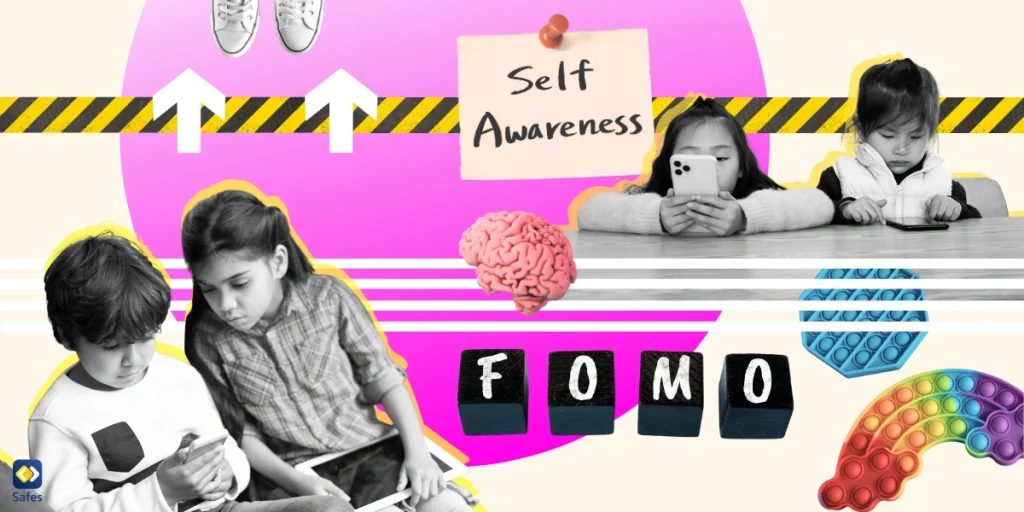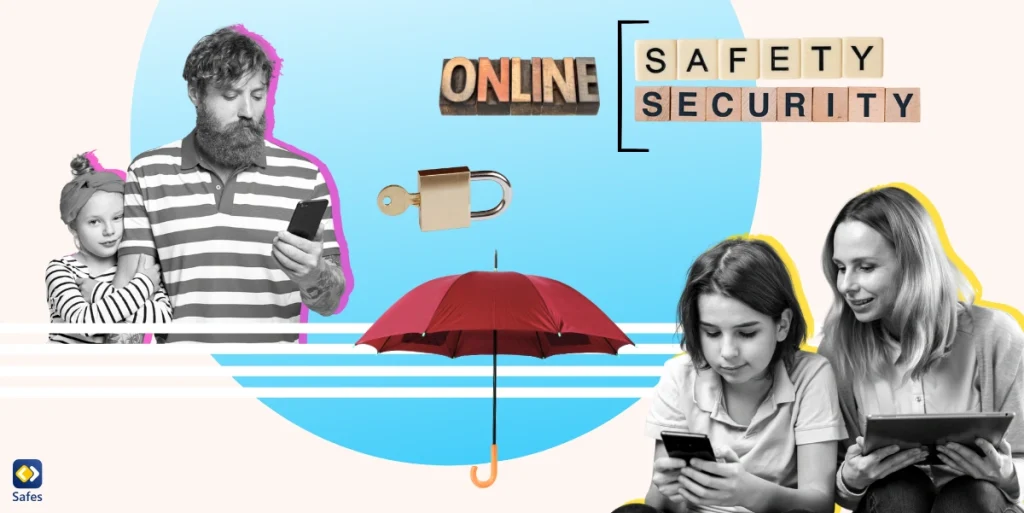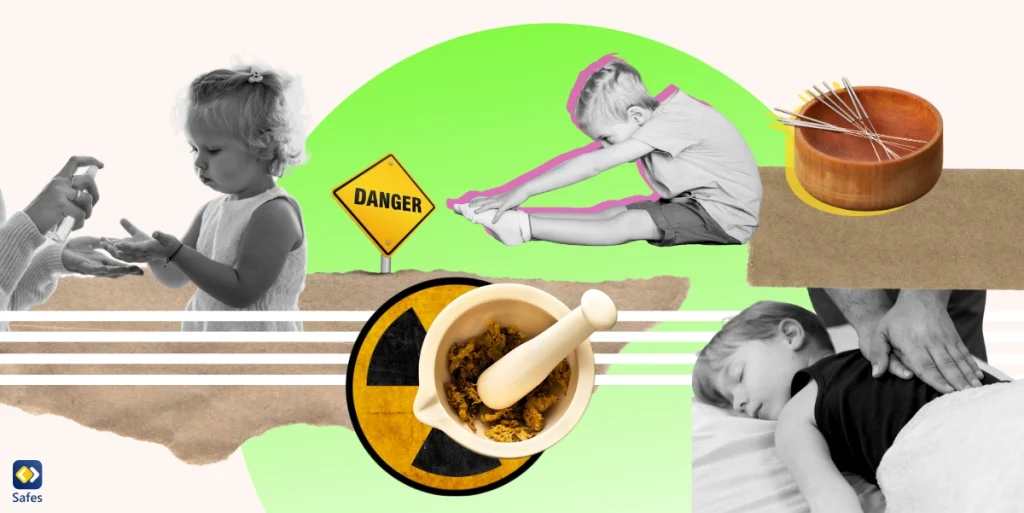The term “flexing on social media” has gained considerable traction among netizens (internet citizens), especially young adults and teenagers. It refers to displaying one’s wealth, status, or success explicitly on social media platforms to gain attention, validation, or induce envy among peers. According to AACAP, 90% of children aged 13-17 use social media, for whom the trend of flexing has become an integral part of their online life. Today, we’ll discuss the phenomenon of flexing on social media, the harm it causes to young minds, and how to mitigate the damage.
Download and Start Your Free Trial of the Safes Parental Control App
Social Media Influencers and the Cult of Flexing Luxury Lifestyles
Social media platforms like Instagram and TikTok have given rise to a new breed of celebrities and influencers. These individuals often amass large followings by curating their lives to appear glamorous, luxurious, and aspirational. Many influencers indulge in “flexing” by showcasing their seemingly affluent lifestyles, often characterized by designer wear, exotic vacations, and luxurious homes and cars.
For instance, influencer Lil Tay, known as the “youngest flexer of the century,” was notorious for flaunting her wealth, featuring million-dollar homes and Rolls-Royce cars in her posts. Similarly, rapper Lil Pump and YouTube star RiceGum are well-known for their pretentious displays of wealth.
While the intention behind such flexing could be to build their brand or to prove their success, this trend has been linked with increased instances of “Instagram Envy” among their young followers. This phenomenon refers to the feelings of inadequacy, insecurity, and despair that arise when children and young adults compare their lives with the lavish lifestyles portrayed by influencers.

Identifying the Signs of Mental Toll
Continuous exposure to the extravagant lifestyles of influencers can lead to detrimental impacts on the mental health of young followers. With the growing prevalence of mental illnesses among young adults, as reported by the Substance Abuse and Mental Health Services Administration, it’s crucial to identify the signs and understand the role of social media in exacerbating these issues.
Children and young adults exposed to constant flexing on social media may start exhibiting signs of increased anxiety, depression, and insecurity. They may also develop unhealthy obsessions with materialistic wealth, leading to impulsive consumerism and higher levels of debt.
A 2017 study discovered a rise in credit card debt among young adults aged 18-20 years old, with the average amount owed being $611. Moreover, materialistic tendencies can lead to increased self-centeredness and aggression toward others.
Safeguarding Children from Negative Influences
While it’s essential to acknowledge the potential harm of flexing on social media, it’s equally vital to equip children with the tools and understanding to navigate this digital landscape safely. Open conversations about the unrealistic portrayal of life on social media can help dispel the myths associated with the perceived success and happiness of influencers.
Educating children about the staged reality of social media and the harmful impacts of excessive materialism can foster a healthier relationship with these platforms. Additionally, introducing them to uplifting and inspiring social media content can help counteract the negative impacts of flexing.
Nurturing a Positive Digital Identity
In the era of digital connectivity, it’s crucial for children and young adults to establish a positive digital identity. Encouraging values of humility, authenticity, and respect can help them engage in more meaningful and genuine online interactions rather than succumbing to the pressures of flexing.
Moreover, it’s essential to remind children that their self-worth is not defined by their material possessions or social media popularity but by their character, values, and actions.

Setting Healthy Boundaries
Establishing healthy boundaries for social media use can also play a crucial role in mitigating its negative impacts. This could involve setting time limits for platform usage, encouraging offline hobbies, and promoting face-to-face social interactions.
It’s also essential to monitor the content that children are consuming and ensure that it aligns with their age and maturity level. This can be achieved through parental control settings and apps that offer safe browsing options.
Promoting Mental Well-Being Beyond Social Media
While addressing the impacts of social media is essential, it’s equally important to promote mental well-being in all aspects of life. Regular physical activity, a balanced diet, adequate sleep, and mindfulness practices can significantly improve mental health.
Moreover, fostering open and supportive communication can help children feel comfortable discussing their feelings and experiences. This could involve regular family conversations, one-on-one discussions, or seeking help from mental health professionals if needed.
Using Parental Control Apps Like Safes for Support
Parental control apps like Safes can be a valuable tool for parents to ensure a safe and healthy digital environment for their children. This app allows you to monitor your child’s online activity, set usage limits, filter inappropriate content, and foster healthy digital habits. Start creating a safer online space for your child with Safes—explore our 14-day free trial today!
In the context of social media flexing, Safes can help you identify if your child is excessively exposed to such content or exhibiting signs of Instagram Envy. This can enable timely interventions and promote a healthier relationship with social media.
You can install Safes on all phones, tablets, and computers on Android, iOS, Windows, and Mac platforms. If you wish to learn how to protect your child on each of these platforms and devices with Safes, use the following links:
- Windows parental controls
- Macbook parental controls
- Parental controls on Android
- iPhone parental controls
Flexing on Social Media: Conclusion
The trend of flexing on social media is unlikely to diminish in the near future. But the power to mitigate its impacts lies in our hands. By fostering open conversations, setting healthy digital boundaries, and promoting mental well-being beyond social media, we can ensure a safer and healthier digital future for our children.
For further reading, consider exploring these blogs on our website. They provide valuable insights and resources for ensuring your child’s safety in the digital world:
- How Social Media Algorithms Contribute to its Toxicity
- How Social Media Fuels Attention Seeking Behaviors in Children
- Types of Anti-Social Behavior in Children: The Role of Social Media
- Teens’ Social Media and Eating Disorder Statistics are Scary
- What I’ve Learned from Stories of Social Media Ruining Lives
Your Child’s Online Safety Starts Here
Every parent today needs a solution to manage screen time and keep their child safe online.
Without the right tools, digital risks and excessive screen time can impact children's well-being. Safes helps parents set healthy boundaries, monitor activity, and protect kids from online dangers—all with an easy-to-use app.
Take control of your child’s digital world. Learn more about Safes or download the app to start your free trial today!




